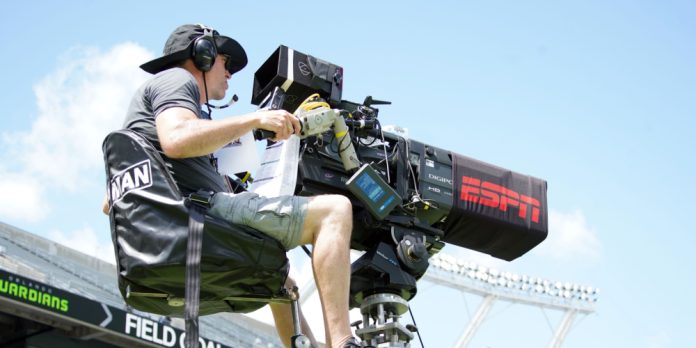Perhaps the biggest question surrounding Penn Entertainment’s new deal with ESPN is whether or not the partnership can crack the nut that has tripped up so many partnerships before them. Namely, can a media brand successfully convert bettors to an app? And can they do so in a way that does not compromise the integrity of either brand or betting in general?
SharpRank Founder and CEO Chris Adams knows the potential pitfalls that come with blending content and bookmaking. His company helps operators and content creators audit content and create meaningful separations to ensure there are no instances where the traders influence content or the content influences traders.
Separation between editorial and the traders is paramount
Immediately after Penn’s announced its plans to launch ESPN BET, pundits and industry members started questioning where those lines between content and betting would land. For Adams, this is a sign the industry is getting better about thinking ahead when it comes to potential conflicts of interest.
“It’s really interesting to see how quickly we’ve evolved this discussion as a group because Prior to the NBA Draft incident, all of that conversation happened after the fact,” Adams noted, referencing an incident with Shams Charania and FanDuel that happened earlier this year.
“The moment the ESPN deal was announced, almost the first articles out asked ‘How does this work with the content and the insiders and the sportsbook?’ and how do they all interrelate, so there’s been kind of a proactive approach to this exact conversation, which is really great,” he added.
ESPN is proactively taking steps to ensure its high journalistic standards remain in place. Adams joked that self-policing is never the answer.
“One day when I retire I am going to teach a history class called We Can Police Ourselves and it will run you back the annals of history and that statement being made and then the impending collapse that happens directly after that statement is made because it happens every single time.”
He did applaud the steps ESPN has taken so far but does suggest a very clear and delineated separation is important.
“One of the things that that I think we would, as a company suggest is obviously a firewall between those two functions. And I think what we saw publicly from ESPN was really good.”
Don’t even allow the illusion of impropriety
Adams used the most recent Super Bowl as an example of what kind of situations might arise if there aren’t measures in place. Kansas City Chiefs QB Patrick Mahomes was struggling in the first half and someone like an insider at ESPN such as Adam Schefter might be among the first to find out what kind of medical treatment Mahomes received. In theory, he could reach out to Penn with that information and influence the lines for the second half.
To be clear, Adams is not suggesting someone would ever do that. Rather, he is saying that creating a scenario where outsiders can’t even wonder if someone might is the way to nip this issue in the bud.
“Set a speed limit. I think this was done really well with some of the match integrity and the data feed integrity and things of the past. You need to set the speed limit first. Should people choose to speed after that, you have a framework that can evaluate those instances,” he explained.
Moreover, Adams is not suggesting ESPN and Penn shouldn’t embrace the opportunities to mix sports betting and media. In fact, the way to crack that nut probably involves thinking beyond sports broadcasters simply offering their picks of the day. In order to hit their aggressive market share targets, Adams thinks disruption is key.
Lessons learned from the Barstool Sports experiment
He also thinks that, while the Barstool deal ended poorly, Penn probably learned quite a bit about how to approach things this second time around.
I think they saw some promise in the engagement of the Barstool deal, I truly believe that. I don’t know if the top of the funnel was big enough. And separately, the rights library and the way in which they want to integrate the media might might look a little different,” he said of Penn’s previous deal.
I think what [Penn] saw was one component, they said okay, we can kind of see how this works with a rabid, loyal fan base. And if we liked that component, we can kind of see what a broader, bigger top of the funnel really looks like, especially as you think about what that media integration could really look like,” he added.
The sky is the limit for what those integrations could look like and, Adams, like many others, is already daydreaming about what could be in the pipeline.
“Just picture down the road being able to watch Monday Night Football like where they highlighted the puck in hockey. Imagine the individual experience viewing experience had similar types of overlays to players that I had a prop bet on,” he suggested.
It will take that kind of disruption. The industry has seen a long list of groups try to move users in a single direction from the media to the operator with a standard slate of tactics like picks and endorsements.
“[Operators] just don’t know that it can work both ways. What I mean by that is those types of innovations into the media versus the media pushing into the sports book, and having the audience flow both ways rather than trying to traffic them just one,” Adams said.














